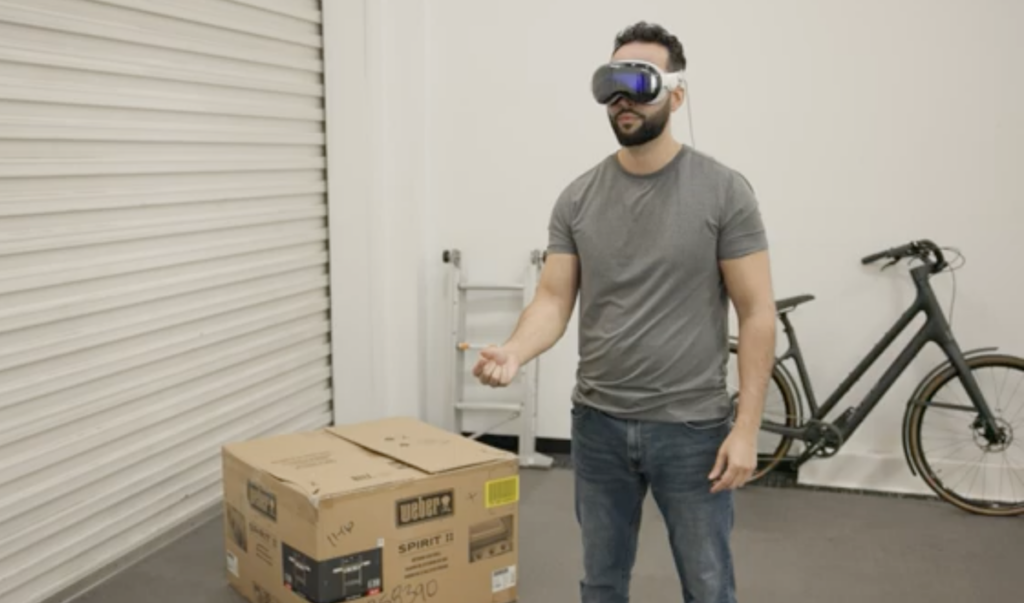We’re living in increasingly technology-driven work environments. Today’s workers are thirsting for new and innovative ways of learning in every part of their lives. It’s not a surprise that the e-learning industry is projected to grow by nearly 18% every year over the next seven years.
Against that backdrop, your workforce expects new and innovative ways to conduct their daily business. Just as importantly, they’re looking for innovations in the ways they absorb and learn new information. They’ll naturally gravitate toward businesses that can prioritize modern processes and technology.
This trend is expanding beyond classroom-based professional development as well. Work instructions, long restricted to linear manuals and only recently moving toward video, are seeing new opportunities to become immersive, interactive learning tools for any professional, from manufacturers to field workers. Here, as everywhere else in business, a visual and hands-on approach to communicating important information is key.
Within that digitally driven environment, immersive instructions are beginning to take a foothold. They offer a deeper and more engaging learning experience, enabling users to learn even the most complex materials in a more intuitive and dynamic delivery format. Learn how the right instructions can propel your business into the future by meeting and exceeding the needs and expectations of your workers.
Where Classic Manuals Fall Short
Some industries and areas of business move faster into the digital realm than others. Work instructions have been on the slower end of the spectrum, remaining static and non-digital for decades. Given the complexity of work instructions, it simply wasn’t possible to build anything but thick paper-based manuals to account for every nuance.
Even as technology has evolved, the shift has largely been to video versions of the same linear processes, moving to a visual medium but without fully leveraging the benefits of immersion. Unfortunately, the status quo is not automatically the best option. Paper and even video-based manuals have fallen short of expectations for years due to a few common reasons:
- The linear conundrum: To be comprehensive, traditional manuals have to present all information bit by bit. However, because their format is inherently linear, any professionals engaging with them will need to go front to back rather than focusing only on the pieces that are relevant to them.
- A lack of searchability: Professionals reading manuals have to rely on a table of contents or index to find what they’re looking for, which can be confusing and time-consuming. Quickly searching for only the most relevant bits of information becomes impossible.
- Distance from the real world: Manuals are, almost by definition, abstract. Through illustrations, images, or videos, they try to provide an image of what the text-based instructions say. But even those visuals are static, unable to be manipulated to make more sense against the specific real-world context in which a professional needs the information.
- Information obsolescence: Both paper and video manuals require extensive production time. They also become outdated the moment a piece of equipment receives an update, its context changes, or an improved method emerges. The result is either outdated information or a constant and costly process of trying to catch up with those changes.
Related: Say Goodbye to Confusing Manuals: Embrace Interactive 3D Solutions
Needless to say, new solutions are necessary to overcome these shortcomings. Just as importantly, newer instruction possibilities solve key audience needs in the realm of visual learning, interactivity, and a new generation’s thirst for more immersive means of learning.
The Visual Nature of Modern Learning
Among the factors that make immersive work instructions stand out, their visual nature is perhaps the most fundamental. Human beings have always been visual learners. In fact, studies show that 90% of the information transmitted to the brain is visual, which makes sense considering that our brains process visual information 60,000 times faster than text.
Naturally, this trend extends into professional learning as well. According to one study, visual learning works so well because it stimulates multiple senses at the same time. Visual signals and audio add to the text prompts to provide more information for the brain to process, all making connections together to maximize comprehension and retention.
Visual learning also eases the transition from training materials to the real world. Because field workers and other professionals are able to see the situation rather than simply having to imagine something they read, they can more easily apply their training to a scenario right in front of them.
All of these pieces make immersive instructions a natural fit for a commonly and increasingly visual workforce. But of course, static video instructions can provide similar benefits compared to textual learning manuals. That’s why the second component of immersive instructions—interactivity—becomes such an important piece of the puzzle.
Interactivity as the Key to Learning Success
Anyone learning something new can improve their retention if they take an active part in what they’re learning. That’s the key behind interactivity, the idea that engaging directly with your training materials will ultimately make that education more successful. And it’s what drives modern immersive instructions to become so popular so quickly.
Put simply, it’s all about the hands-on experience. Seeing the product from every angle and making sure that you are the one who can manipulate each angle builds a deeper understanding of the product. You’re also improving the retention of any information related to the knowledge at hand. The ability to pinch, zoom, and rotate any visuals via a touch screen makes these types of instructions stand out from static images or even videos.
Interactivity is not singular either. Instead, it can come in several forms, including:
- The ability to digitally ‘move around’ a product or piece of equipment in order to see it from any possible angle, which is more in line with the real world.
- A search function that makes it easier and more efficient to find the right parts, the right pieces of the larger whole, and the right details for the situation at hand.
- Animations that can be paused, fast-forwarded, and replayed as needed, ensuring greater comprehension and that any part of the instruction can become ingrained for each trainee.
Related: How Do 3D Work Instructions Help Workers?
As a result of these interactive elements, even the most demanding generations that look for interactive learning opportunities will be able to quickly and effectively absorb relevant information for their jobs. That’s especially true considering the different ways they can immerse themselves in the instructions.
A New Generation’s Thirst for Immersion
As businesses build out their teams, they are seeing Gen Z candidates, a generation that has never known a world without technology, entering the workforce in massive numbers. And Gen Z, it turns out, prioritizes immersive experiences when it comes to almost every aspect of their lives, including learning new skills and knowledge:
Immersive experiences mirror real-world situations, allowing learners to focus on one task at a time and understand the significance of prioritization. These interactive environments enable Gen Zers to make decisions based on task importance, allocate resources effectively, and enhance productivity. Simulations provide a controlled setting for practicing prioritization, honing critical task identification, and priority management abilities.
The key here is being able to dive into digital environments that simulate the real world. Through these more immersive environments, any trainees—regardless of their generation—are able to quickly grasp new concepts and then apply them to their specific situation and environment.
Immersive instructions, in other words, have a particular impact on Gen Z’s ability to confidently learn and succeed in their chosen career. Ultimately, digital instructions can help any worker by offering similar benefits, in turn creating an intuitive and dynamic way to absorb even the most complex information.
Simple Ways to Absorb Complex Information
Finally, one of the least considered advantages of immersive instructions is their ability to distill complex pieces of information into much simpler, streamlined bits of knowledge. With the right build, you will be able to leverage virtual, immersive environments for the ability to get even the most complex information across quickly.
That possibility arises through the above-mentioned tools. Short animations and videos, the ability to pinch, rotate, and zoom, and interactive touch screens that can easily be manipulated all enable your teams to hone in on the exact information they need. That builds relevance, which improves their chances of retaining the information that matters most to them.
Upgrade to Immersive Instructions for Your Workforce
Unlike traditional manuals, we are no longer talking about a mere 1:1 information transfer. Instead, it’s a system designed specifically to ensure that only the right information gets delivered to your workers when they need it. Getting there requires the right app to build your instructions. That’s where BILT comes in with an interactive solution specifically designed to convert your paper or video manuals into interactive, immersive, and visual powerhouses of training and knowledge. Ready to learn more about the next generation of immersive instructions? BILT can create, host, and manage instructional content distribution for your organization. Contact us today.



